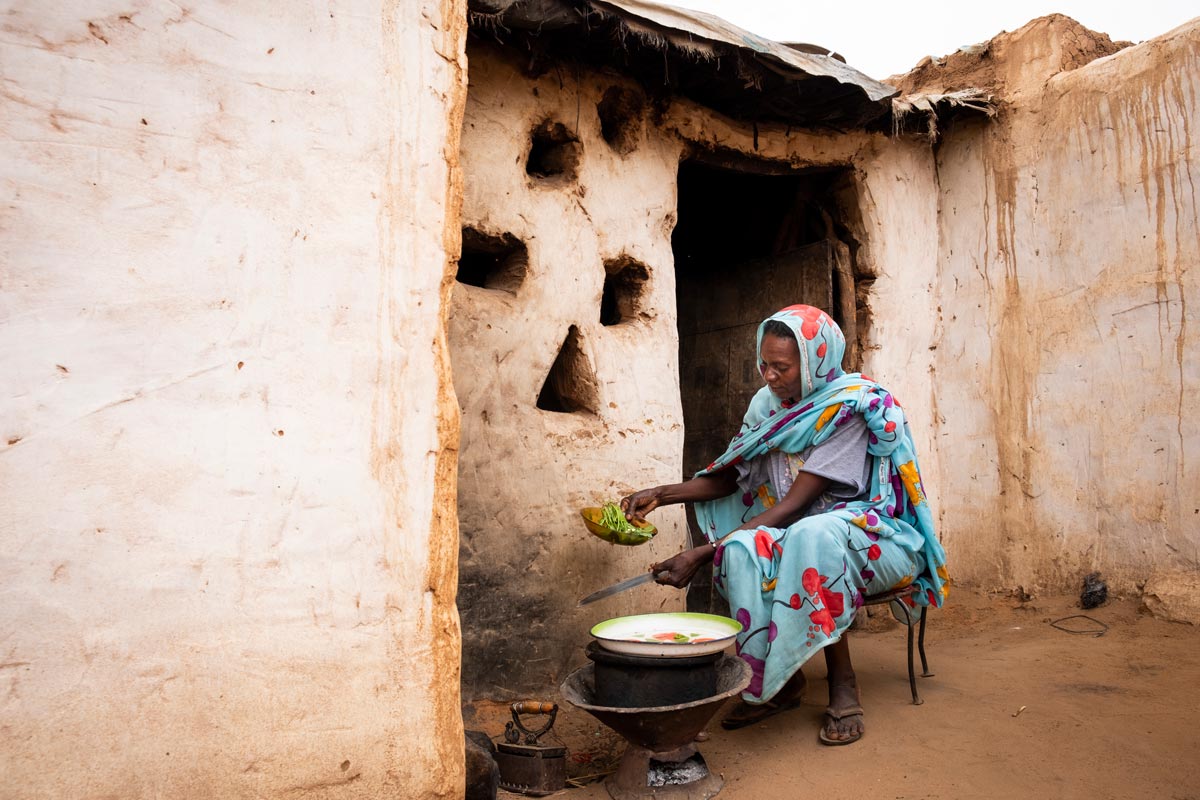Small delicate leaves of watercress sprout from two sacks, planted just a few weeks ago, in North Darfur, Sudan. Next to the sacks, Medina Adam Jado, 40, harvests a few handfuls of arugula from a small, square plot in the ground. She then walks over to the kitchen to wash and salt the peppery green leaves. The mother of nine has lived in Zamzam refugee camp since 2004, when she and her family fled violence in their village.
Today the camp is home to an estimated 200,000 internally displaced Sudanese. Far from their agricultural lands and largely reliant on humanitarian aid for their staples, malnutrition is a major issue in the area.
Back in 2017, Medina took her daughter Mwaheb, 3, to Relief International’s clinic in Zamzam A. What she thought would be a short visit turned into a seven day stay after her daughter was diagnosed with severe malnutrition. Over the course of treatment, Mwaheb received emergency care and therapeutic supplements. The pair were then enrolled in year-long program to prevent Mwaheb from relapsing. Relief International’s nutrition programs target 46,132 individuals like Medina in Darfur.
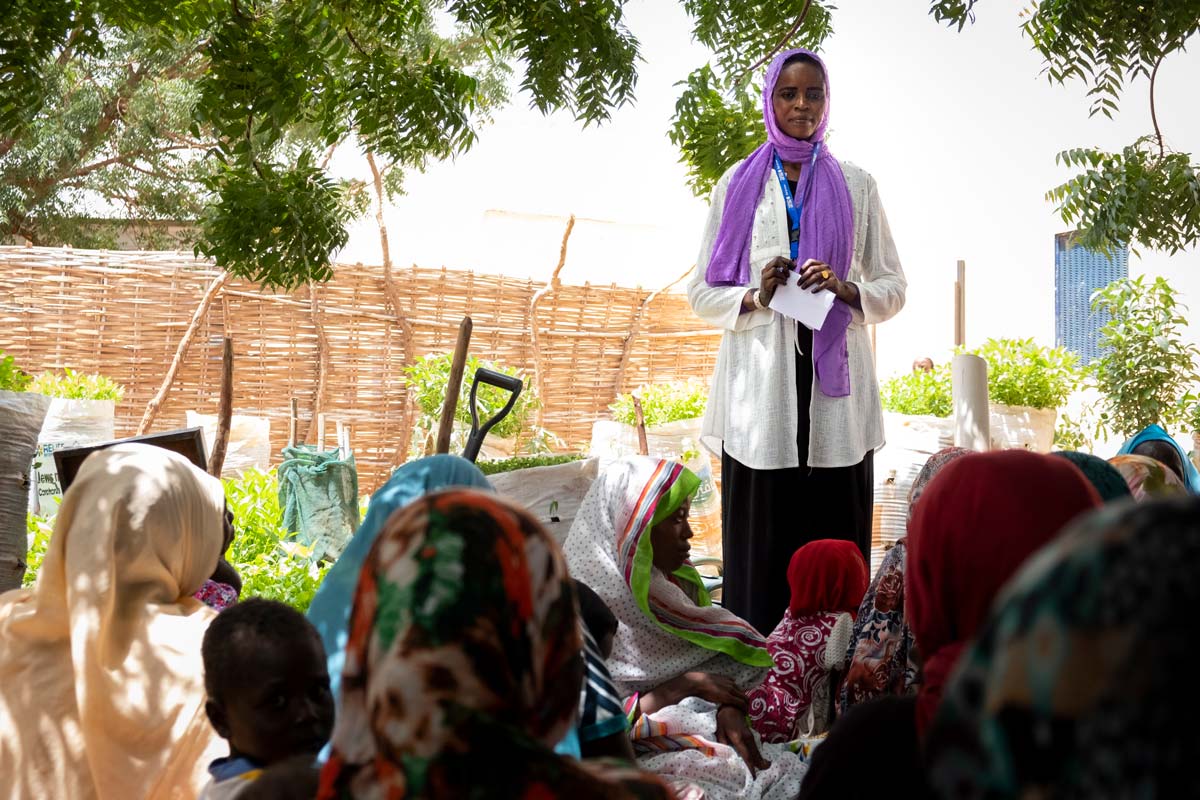
Relief International's Agriculture Field Monitor Esra Adam Eltyeb Abaker teaches mothers with children at risk for malnutrition how to plant their own kitchen gardens in Zamzam camp.
© Elie Gardner/RI
The programs cover health, nutrition and hygiene. But learning about vegetables and their health benefits is only useful when mothers can put this knowledge into practice. Before Relief International undertook this program, vegetables were only available weekly at the market. Families would go days – or even weeks – without eating any. Now, Medina and about 3,000 other mothers in Zamzam and throughout the surrounding host community have learned from our trainings how to grow their own vegetables.
“At the market, money controls what and how much you can buy,” Awatif Musa, 40, said. “Now, we have more freedom to decide.”
On a recent Sunday afternoon, dozens of women gathered at a demonstration garden inside the clinic grounds of Zamzam A. Relief International agricultural field monitor Esra Adam Eltyeb Abaker picks a handful of women to practice building a sack garden. The women rise and shovel dirt into a white plastic sack. Esra holds a plastic tube upright in the middle of the sack and another woman drops rocks into the tube. Once the sack is full, they slide the tube out. The creative design helps the sack to retain water. Esra then shows them how to poke holes in the side of the sack and plant seeds there as well. Now, with the same amount of land, up to six times the amount of produce can be grown and harvested. The sack garden responds to the scarcity of two resources – water and space.
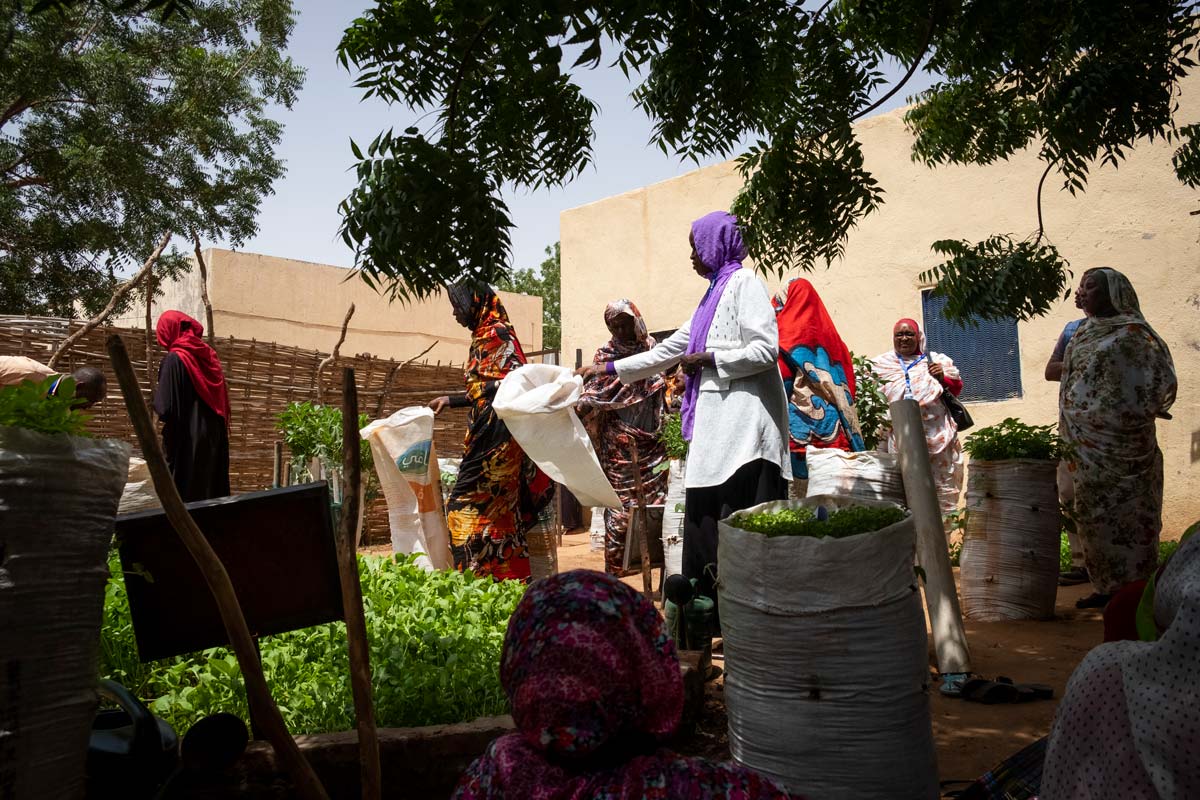
Relief International staff lead a kitchen garden demonstration outside of our health clinic in Sudan's Zamzam camp.
© Elie Gardner/RI
After a three-day training, participants are given seeds and tools to start their own gardens. Agricultural field monitors like Esra visit the women in their homes to check on their gardens’ progress and troubleshoot any issues that arise. Medina sowed her first seeds last summer. “I was so happy to see my children eat vegetables,” Medina says. “In my home we like watercress and mallow the most.”
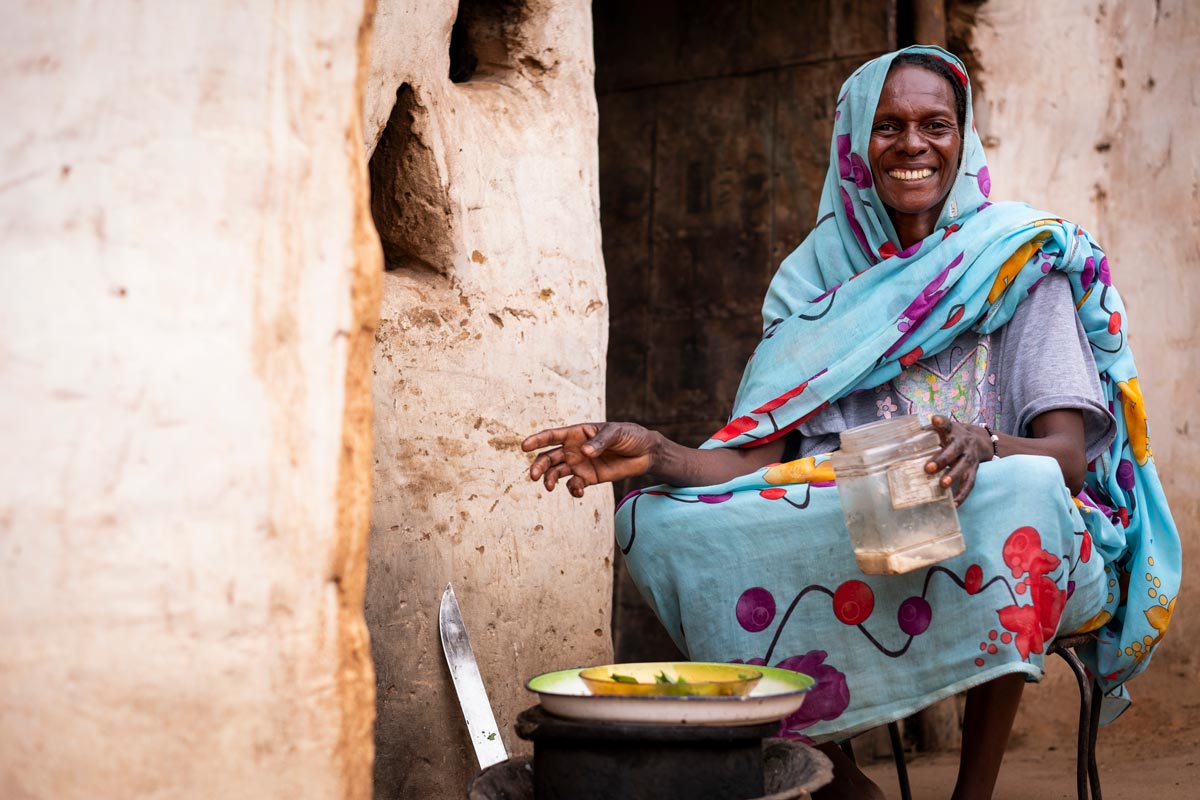
© Elie Gardner/RI
When thousands of Sudanese settled in Zamzam, host communities in rural El Fasher gave up agricultural lands. The cost of staple grains shot up, leading to cases of increased malnutrition and vulnerability there too. Relief International has a total of ten demonstration plots for kitchen gardens throughout North Darfur – two of them serve about 400 women in rural El Fasher.
“We are doing much better than before,” Mariam Abdul Majid, 40, says. “The vegetables from our kitchen gardens also taste must better than the ones we used to buy at the market.”
Mariam, who lives in Umgedebbo with her three children and husband, has taught four of her neighbors how to start their own kitchen gardens, passing on her new expertise. Many of the women produce enough vegetables to share with their neighbors; others choose to sell their extra produce to earn a few much-needed Sudanese pounds a week.
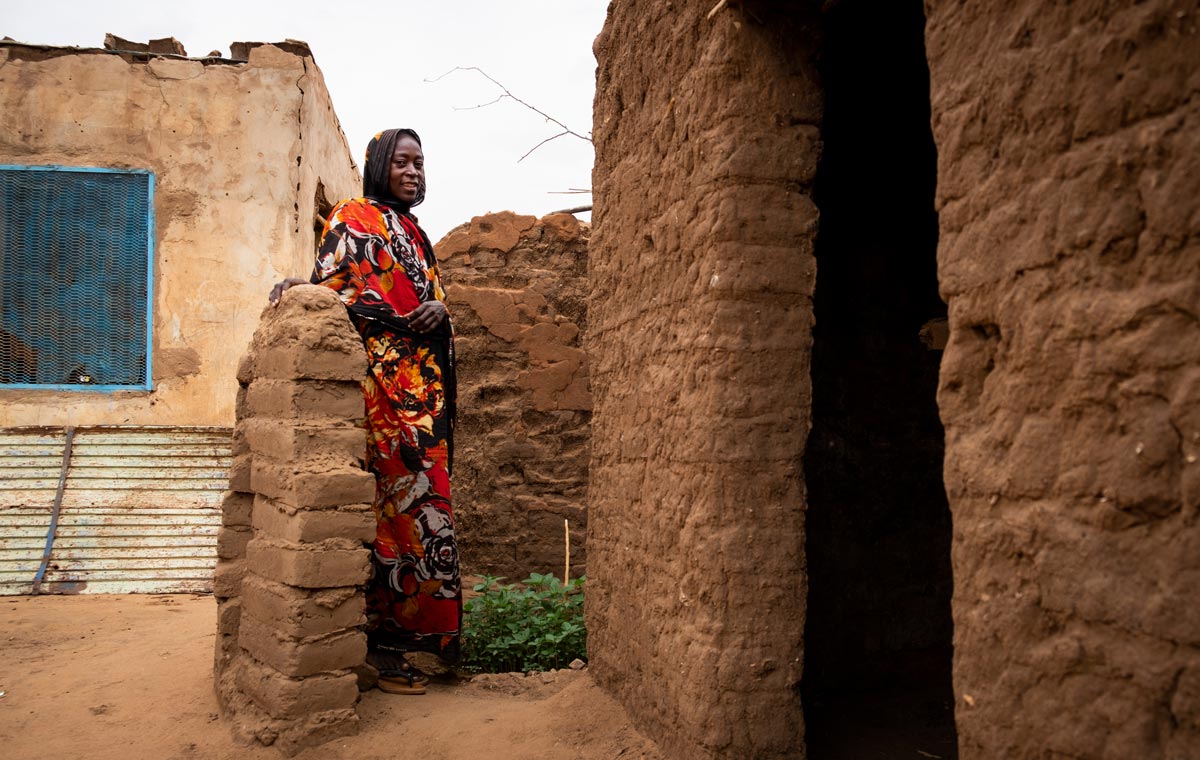
Hawa Ismail Adam Mohamad stands by her kitchen garden, which is located directly behind her home in Sudan's Zamzam camp.
© Elie Gardner/RI
Back in Zamzam, Mohamad Issa Adam, 6, wrestles with friends in his yard. His mom Hawa Ismail Adam Mohamad, 25, smiles at him and passes her hand through her growing mallow leaves. Since being diagnosed with severe malnutrition back in 2017, Mohamad has only returned to the clinic once for a fever. Hawa isn’t worrying about his health this year. Instead, she’s planning her next garden plot. She quickly rattles off the vitamins and nutrients in each of the plants in her garden. “Watercress contains vitamin A. Oh, and carrots are good for the eyes!” she says. “Staying healthy is so important.”
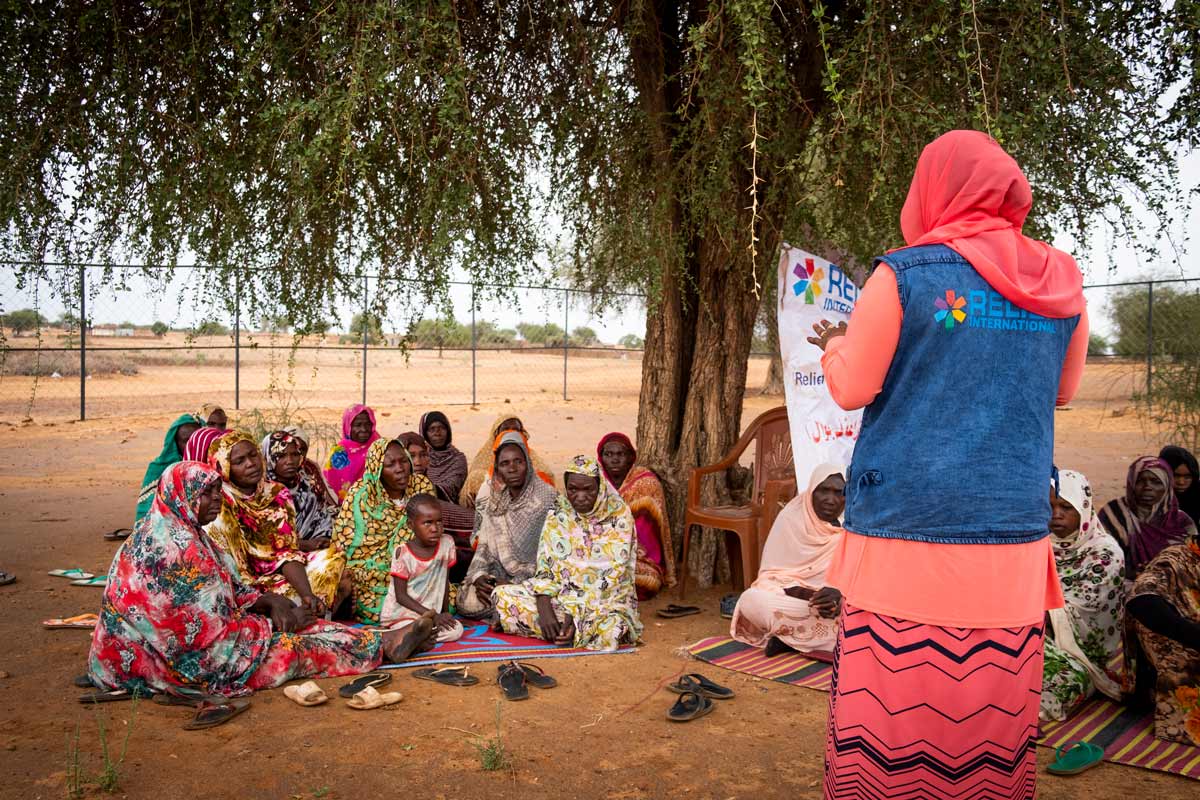
Donate Now
828 million people are currently facing food insecurity around the globe
With your help we can continue to make a difference in the lives of people that need it most.
